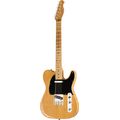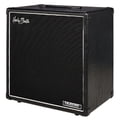The excel sheet is based on the circle of fifths and extended to cover all modes, not only major/ionian and minor/aeolian.
This is how it works:
Any column contains the notes associated with a certain key signature, that is the number of #'s or b's. These notes are repeated two times because of the cyclical nature of the system is pushed into a square matrix (we have there before, haven't we?). Each diatonic key has seven modes, major/ionian and minor/aeolian being the most common but the others are frequently used as well. If you look in the examples tab i included a number of examples for each mode (in no particular key preference) to clarify the differences between, the experience and common feelings associated with each mode.
To find the notes in for example A-dorian (or any other key/mode combination) you follow the row for the dorian mode (row 2) until you find the note A (col2) This note and the 6 following (in the same column) (A, B, C, D, E, F#, G) make up the A-dorian mode. If these notes are viewed without respect to any root note G-major, A-dorian, B-phrygian, C-Lydian, D-mixolydian, E-minor, and F#-locrian would be identical. But they are not, what distinguishes them is a) the root note, or rather "Tonal Center" and b) The characteristic note indicated by the arrows in the leftmost column. So if you play a lick consisting of the notes in A-dorian that emphasizes F# of a bassline with a tonal center of A you would definitely get a dorian feel. A tip is to play the pentatonic that fits the mode (minor for dorian, phrygian and aeolian, major for ionian, lydian and mixolydian) with the addition of the characteristic note indicated by the table. Locrian is a bit difficult but not many compositions utilize this mode.
What you are asking, the relationship between G-major/ionian and G-minor/aeolinan involves a modulation or change of key since you need to move from one column to another. This gives a quite dramatic effect and there are some theories for that as well, but i think that would be another topic of its own.
What you can do if you are interested in comparing two modes of the same root is to copy and paste them into the empty tab side by side. Go to the first row (major) and second column (G, 1#) and select the first seven cells in that column and paste them into empty space in the third tab. Now got to the sixth row (minor) and second column from the right (G, 2b), select the consecutive seven cells from that column and paste them adjacent to the first one. Now you should have:
G G
A A
B Bb
C C
D D
E Eb
F# F
So you see that these scales differ by 3 notes B/Bb, E/Eb, F#/F. These differences can also be deduced by looking at the key signatures alone, G-major having 1# (F#) and G-minor having 2b (Bb, Eb). If we want to extend the analysis we can see that the differences correspond to scale degrees 3, 6, 7. All of these are major in the major scale (4, 9, 11 semitones) and minor in the minor scale (3, 8, 10 semitones). Hence the name of the scales. The german (and Scandinavian)designations "Dur" and "Moll" are derived from Latin meaning "Hard" and "Soft" since the major ones have a harder, more brittle, sound.
Here is a video that is a little more elaborate on your question:
[youtube]apqaZJ27biQ[/youtube]
Sorry for the wrong plural form, i was too lazy to look it up.





